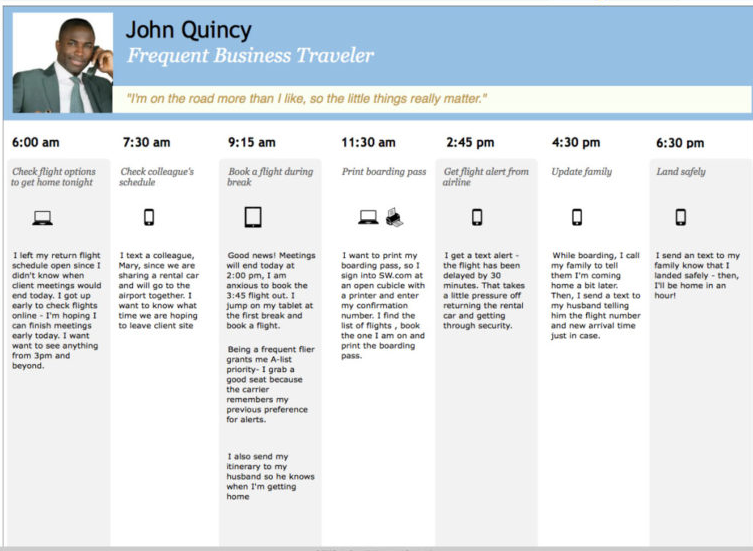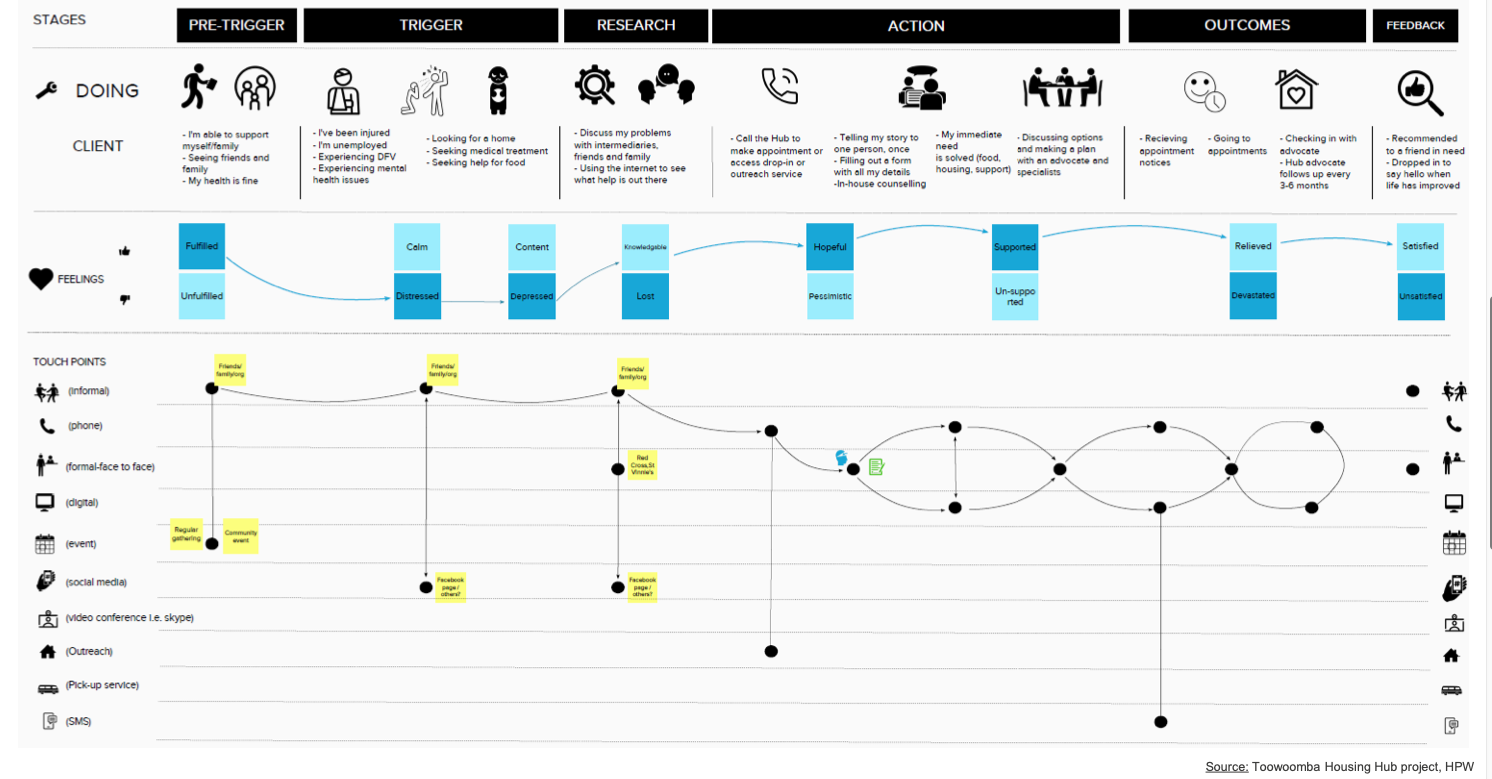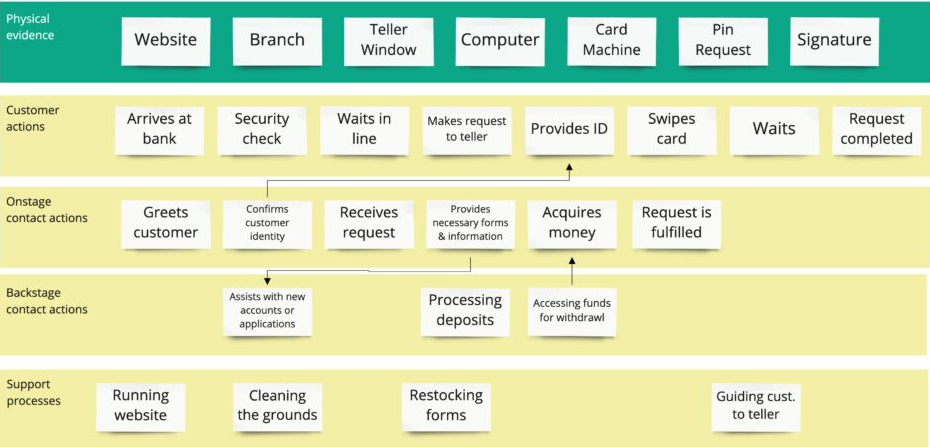SEO
How To Create A Customer Journey Map

It’s important to ensure everyone has a positive experience with your brand across all touchpoints.
A great way to make this happen is by creating a customer journey map.
This will provide you with information about a typical customer’s pain points and motivations throughout the buying process, allowing you to properly respond and drastically improving your chances of completing a sale. To assist conversion rate optimization.
If you’re not sure how to get started with creating your own, don’t worry – you’re in the right spot.
In this piece, we’ll take a look at what is included in a customer journey map, as well as give you the information you need to create your own.
What Is A Customer Journey Map?
A customer journey map is a visual representation of the path customers take when interacting with your brand, from awareness to post-purchase. This path is known as the “customer journey” or “conversion funnel.”
Your goal is to outline every touchpoint a potential customer may have with your brand – from their first exposure via social media or an advertising campaign, through their interactions with your website, sales team, and offerings, all the way to completing the purchase and recommending your company to others.
It provides valuable insight into the needs, processes, and perceptions of your targets, equipping you with a deeper understanding of what motivates them and why.
Ultimately, the customer journey map seeks to provide you with an understanding of why people are choosing your brand (and why not), so you can adapt your sales journey to each individual’s unique needs – and close more sales.
Why Is A Customer Journey Map Important?
The point of customer journey mapping is to give you deeper insight into your customers, so you can improve your strategy.
On the surface level, it seems simple enough: you offer a product or service and your customers buy it.
Unfortunately, it’s a lot more complex than that.
Your customers are taking more into consideration than just your offering. They’re also thinking (whether consciously or subconsciously) about past interactions with your brand, advertisements they have seen, recommendations from friends and acquaintances, and exchanges with members of your team.
By mapping this process out, you can not only more accurately tell the story of your brand, but you can also identify places where you’ve missed opportunities, create new touchpoints, and craft more persuasive messaging.
A customer journey map also gives you a tangible frame of reference to make visualizing the customer journey easier and serves as a resource for other members of your organization.
Your map will help you answer questions like:
- How are customers interacting with my brand?
- At which stage of the buyer’s journey am I losing the most customers?
- Is my website’s UI/UX frustrating and driving customers away?
- How helpful and responsible is my customer service team?
It’s important to note that customer journeys are not usually linear.
It is rare for a potential customer to follow the steps of the buying decision in exact sequence, moving neatly from problem recognition to information gathering to solution evaluation to purchase.
Instead, they’re far more likely to double back, skip steps or switch channels mid-journey. This can make mapping the customer journey a challenge. But it’s not something you can ignore.
What Is Included In A Customer Journey Map?
Depending on what resources you use, you may find different ideas about what should and shouldn’t be included in a customer journey map.
While yours may vary depending on your industry and need, it should always include the following information:
Information About The Buying Process
Your customer journey map should clearly outline significant milestones on the journey from lead to satisfied customer. You’ll want to organize these into touchpoints and stages.
Touchpoints represent any time a customer interacts with your brand, from hearing a commercial on the radio, to receiving a follow-up email after a purchase.
Stages are the goals behind every touchpoint and can be broken down into the following: awareness, consideration, purchase, retention, and advocacy.
To develop a more thorough understanding of how customers make buying decisions, utilize surveys with existing customers.
You should also look for FAQs that your customer service team regularly deals with.
Customer Actions
This means detailing how customers are reacting at each stage of the buying process.
They may read online reviews, request a free trial, or speak to friends who have previously used your company.
The point of including this is to explore the various ways a customer could interact with you.
Pain Points
What emotions is your target feeling at each stage of the purchasing process?
If it’s a negative emotion (e.g., frustration, anger, worry), your customer journey map should identify why they’re feeling this way.
Once you’ve done this, you can implement solutions to reduce or eliminate this feeling.
Solutions
Tying in with the previous point, the final element of your map is to include potential solutions to eliminate logjams, negative emotions, and pain points, while expediting the buying process.
This may require some brainstorming but is well worth it to ensure your customers are as satisfied as possible with the act of buying from you.
How Do You Create Customer Journey Maps?
1. Set Your Objectives
Before you set pen to paper (or mouse to mousepad), you’ll first want to decide what you’re hoping to accomplish with your buyer’s journey map.
What is your goal? Making more sales? Developing a new customer base? To improve the perception of your brand?
Have a clear goal for each stage and clearly outline it.
2. Create Customer Personas
Customer personas are representations of your average customers based on existing customers and market research.
You’ll want to include things like demographic information to help you get into the mind of the people you’re trying to sell to.
Every purchase is driven by some sort of need or desire – whether it’s a new pair of shoes, a washing machine, or a meal at a restaurant.
For example, the purchase of a new outfit could be driven by the desire to look good, while hiring a plumber could be driven by a leaky pipe that needs fixing.
Your customer journey map should highlight the emotions and needs of your customers, identify the reason why they feel this way, and explain how and why your offering is the solution.
You should include characteristics like:
- Age.
- Job title.
- Income.
- Professional goals.
- Personal goals.
- Education level.
3. Draft Typical Paths
Now it’s time to outline the paths a typical customer would take when interacting with your brand.
Based on your research, you should already know the touchpoints targets will encounter. This might include things like:
- Your website.
- Your social media channels.
- Email marketing.
- Traditional advertising.
- Display ads.
- Third-party reviews.
Make a list of these and use it to create a physical map showing how your customers move from point to point. This doesn’t have to be fancy and can just be a rough sketch on paper, but it will help you visualize how people are interacting with your brand.
Make sure you’re considering all relevant touchpoints, including:
- Customer actions – What exactly are your customers doing? How many steps are they required to take?
- Motivations – What emotions or motivations are driving your targets? How are you speaking to their pain points?
- Obstacles – What is stopping them from taking action? Is your offering too expensive? Maybe wait times are too long? Identifying these can help you overcome them.
Later, once you’ve finalized how everything works, you can create a neater, final copy to share.
4. Allocate Resources
Now that you have your touchpoints and paths defined, you should consider the variety of resources each requires.
This can include labor costs in the form of sales meetings or customer service calls, hard costs for advertisements, and the software and hardware tools required at each stage.
List all the costs associated with each touchpoint as accurately as possible. This will help you identify areas of waste, as well as underserved opportunities.
5. Measure And Refine
Nothing in digital marketing is ever done perfectly the first time.
Use your customer journey map to measure your performance.
KPIs will depend on the goals you outlined in step one but should offer tangible insight into what’s working – and what isn’t. Use this information to identify and optimize your most important touchpoints.
Then, use that information to refine your processes, smooth the journey, and improve results.
Your customer journey map will always be a work-in-progress, and you should revisit it on a regular basis to make adjustments and check for new obstacles.
Types Of Customer Journey Maps
There are four main types of customer journey maps, each with its own advantages. Depending on what you’re hoping to achieve, you will likely want to select from one of the following:
Current State
The most common type of customer journey map includes visualizations of the thoughts, emotions, and actions of your existing customers.
They’re useful for understanding what drives your current customers to select your offering, as well as providing insight into areas in need of improvement.
Use this type of customer journey map when you want to communicate and persuade. By outlining a persuasive narrative, they can generate buy-in and investment.
Current state maps are also used for creating a shared understanding and can be used to demonstrate pain points to stakeholders and product owners.
Day In The Life
Whereas current state customer journey maps are only focused on a target’s interactions with your brand, a day-in-the-life map is used to visualize the customer’s actions and mindset on a wider scale.
It includes not just interactions with your brand, but all the activities they do daily. In this way, it’s similar to a current state map, but it includes activities not related to your brand.
 Image credit: Blog.TreasureData.com, February 2023
Image credit: Blog.TreasureData.com, February 2023This provides you with a better understanding of who your targets are, what their pain points are, and how you can more accurately target them.
This type of map is generally used for market development, as it helps you determine a better communication approach.
It enables you to more strategically speak to customers where they are and present your offer at the most timely moment.
Future State
A sort of crystal ball into the future, this type of map requires you to predict the actions and emotions of customers during future interactions with your brand.
 Image credit: Forgov.qld.gov.au, February 2023
Image credit: Forgov.qld.gov.au, February 2023By examining their current experience, you should be able to develop insight into where your brand fits in their lives, as well as prognosticate how upcoming changes will affect them.
Because it creates a shared organizational vision and provides direction for where you want your brand to go, future state maps are ideal for outlining strategic goals and vision.
Service Blueprint
The most in-depth of the types of journey maps outlined here, service blueprints included detailed information about each of the factors included in a customer’s experience.
Some marketers differentiate service blueprints from other types of customer journeys because they’re more focused on what’s happening behind the scenes.
However, because the service blueprint still ties into customer experience, it also falls under the customer journey umbrella.
 Image credit: Miro.com, February 2023
Image credit: Miro.com, February 2023This type of map will provide a data visualization of how your company operates and the way that generates experiences for your targets.
It will include things like the technology being used, your current processes and policies, and the people they are interacting with.
These maps are best used for identifying customer motivations and determining necessary steps for optimizing future buying journeys.
They also help you identify opportunities based on existing processes and prioritize areas of focus for the future.
Make sure the type of customer journey map you’re creating is customized to your specific goals and needs.
Depending on your buyer’s path, you may require more than one, as different targets will have different ways of interacting with your brand.
Map Your Path To More Sales
The entire purpose of customer journey mapping is to improve experiences and make more sales.
By linking your customer and operational data to key touchpoints along the buying path, you can develop a clearer understanding of how people interact with your brand, allowing you to create better processes that will ideally lead to more sales.
Customer journey maps are an extremely effective way to visualize this information and can help you chart a path to more success.
More Resources:
Featured Image: Black Salmon/Shutterstock


















